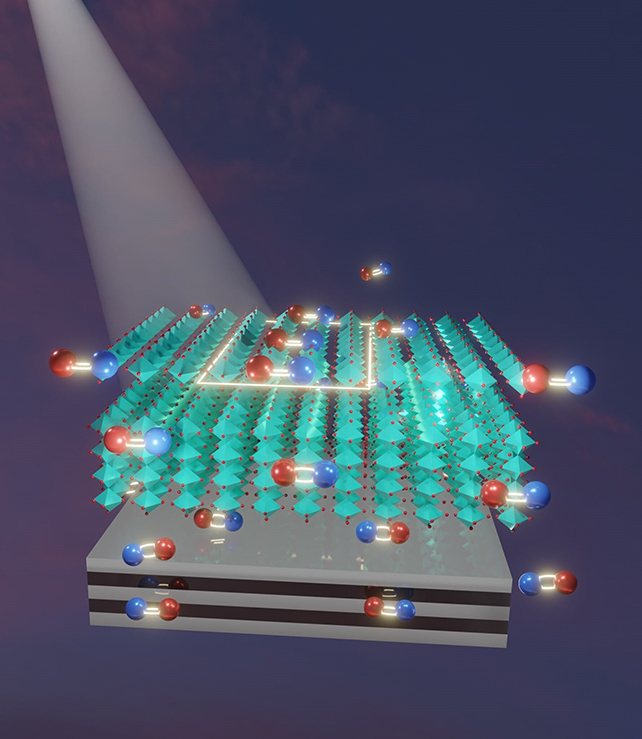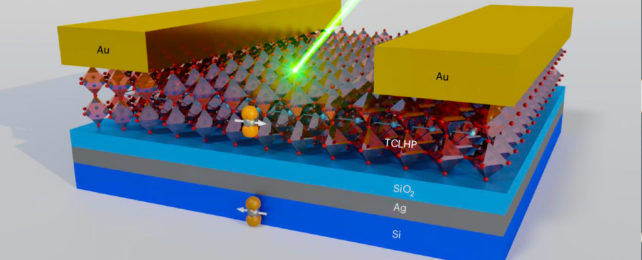Cheaper to produce and better at absorbing higher energy forms of light, perovskite materials have the potential to replace silicon in solar panel technology. Unfortunately scientists are still figuring out how to make these perovskites more stable and longer-lasting.
In a new study, scientists have been able to significantly improve the efficiency of a particular type of this material, known as a lead-halide perovskite. By combining the perovskite with a substrate of metal rather than glass, light conversion efficiency was increased by 250 percent.
"No one else has come to this observation in perovskites," says Chunlei Guo, a professor of optics at the University of Rochester in New York.
"All of a sudden, we can put a metal platform under a perovskite, utterly changing the interaction of the electrons within the perovskite. Thus, we use a physical method to engineer that interaction."
While there's still plenty of work to do to get this technology out of the lab and into a solar panel, it's another indication that these perovskite crystalline structures could soon be the go-to materials when it comes to boosting solar power production.
Solar panels work by using photons of sunlight to excite electrons into leaving their place next to an atom to produce an electrical current. When electrons and the gaps they've left behind recombine, however, energy that could be used as electricity is instead lost as heat.
By adding a metal substrate the researchers found they could reduce that recombination and increase efficiency. The team also showed that alternating layers of metal and dielectric (insulating) material as a substrate for the light-absorbing perovskite could improve efficiency rates in the same way.

The metal substrate acts as a mirror image, flipping the arrangements of electrons and their holes that are generated by the photons. Through "a lot of surprising physics", efficiency is boosted. It's an example of how upgrades in solar cell technology don't necessarily have to involve the absorbing material itself.
"A piece of metal can do just as much work as complex chemical engineering in a wet lab," says Guo.
While the efficiency of perovskites keeps on improving, it's the longevity of these materials that's the major stumbling block to their widespread adoption. The best route forward might end up being to use it in tandem with silicon inside solar panels.
The researchers behind the study think there are more improvements to come in the way that metals can be combined with perovskites using this method, giving us better control over solar panels and how they convert light into electricity.
Part of the appeal of perovskites is that there are multiple choices of metals and halides that could contribute to their production, and the efficiency increasing technique that's been outlined here should apply across the board. That could be particularly important as researchers try to find alternatives that eliminate the use of lead-halides, which for now are strides ahead of other composite materials but have known environmental impacts.
"As new perovskites emerge, we can then use our physics-based method to further enhance their performance," says Guo.
The research has been published in Nature Photonics.
